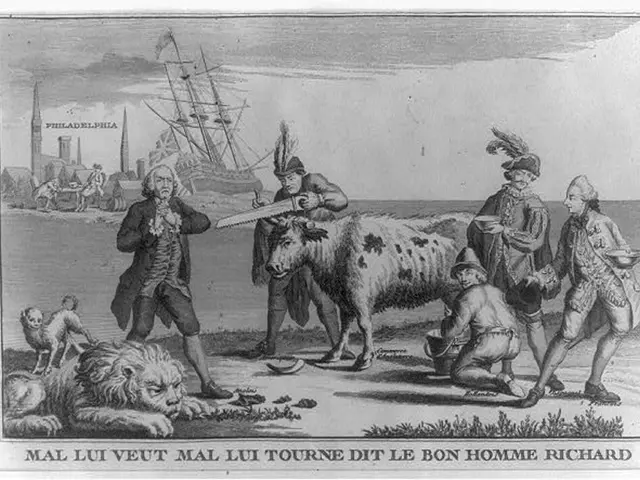Stunning Images of the Iconic Musical Acts of the 1960s Decade
In the heart of the 1960s, a cultural revolution swept across the United States, with the British Invasion leaving an indelible mark on American music and society. English bands, such as the Beatles, the Rolling Stones, the Animals, the Zombies, and many others, brought a fresh perspective to American rock and roll, reinvigorating the genre with new styles, sounds, and attitudes.
The British Invasion began as a musical phenomenon, with these bands heavily borrowing from American rock, blues, and soul music, and reintroducing those styles to American audiences in a new form that was more polished and often more complex. The Zombies, for instance, demonstrated the growing musical complexity of British groups during the era by incorporating elements of classical music sophistication alongside pop.
The Beatles made history with their appearance on The Ed Sullivan Show in February 1964, marking the beginning of "Beatlemania" in the United States. This cultural exchange helped fuel a broader international rock culture, where British and American bands became equal partners by the late 1960s.
Beyond music, the British Invasion reshaped American youth culture in the mid-1960s by inspiring fashion changes, new slang, and attitudes symbolizing youthful rebellion and creative expression. Folk-rock became a defining genre of 1960s bands, blending folk music and rock and roll to challenge societal norms and call attention to political issues.
The Who and the Animals introduced raw energy and R&B influences, laying the groundwork for hard rock and punk. The Rolling Stones brought a grittier, blues-influenced sound, while the Kinks contributed innovative songwriting and experimental production techniques. Artists like Diana Ross and The Supremes, the Temptations, Stevie Wonder, and Marvin Gaye became household names, breaking down racial barriers in popular music.
The success of soul and Motown among 1960s bands fundamentally changed the music industry's power dynamics, establishing Black artists as major commercial forces and cultural influencers. Berry Gordy founded Motown Records in 1959, a Detroit-based label that would go on to become the most successful Black-owned record label in history.
The impact of these 1960s bands extended beyond music, opening the door for foreign acts to establish a base in America. The British Invasion proved to the music industry that non-American acts could achieve commercial success in the U.S., and this shift in dynamics would continue to shape the music landscape for years to come.
References: 1. The British Invasion 2. The Zombies 3. The Beatles on The Ed Sullivan Show 4. Folk rock 5. The Who 6. The Animals 7. Soul music 8. Bob Dylan 9. The Byrds 10. Motown Records 11. The Rolling Stones 12. The Kinks 13. Diana Ross and The Supremes 14. The Temptations 15. Stevie Wonder 16. Marvin Gaye 17. The counterculture of the 1960s
Read also:
- Highlighting the Significance of Off-the-beat Experiences
- Matthew Broderick's Unpublicized Car Collision: A Tragic Incident in Northern Ireland That Claimed the Lives of Two Women and Involved the 'Ferris Bueller' Star
- "Abduction Chronicles: The Series 'Kidnapped'"
- Grim visuals accompanied by a dubstep beat








